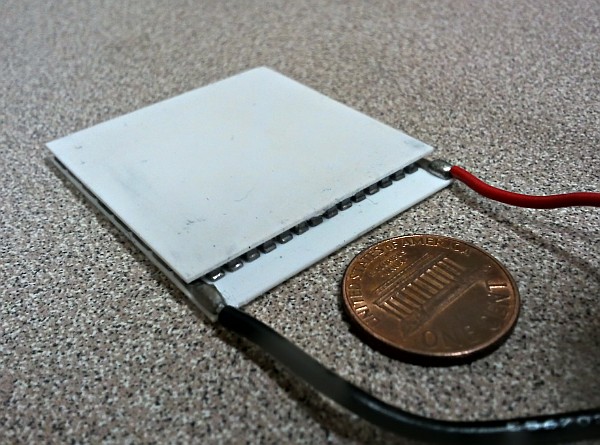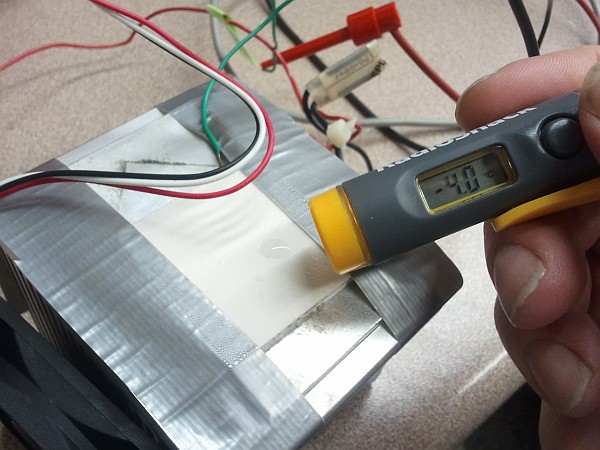Electronics is at its most interesting when you come across something that truly seems magical. Making a webserver out of an Arduino comes close, as does building a computer from scratch — but it’s especially fun to experience something that seems to violate fundamental laws of physics.
The Peltier effect is one such “magical” piece of technology. Generally speaking, when current is run through a component, that component becomes warmer, as some of the electrical energy is radiated as heat. (This is what resistors do best.) Once you have designed enough devices, it becomes second nature to think about the heat generated; if you put five watts of power into a chip, you had better make sure there’s a way to remove five watts of heat at a temperature that won’t destroy the chip.
Now for the magical part. It turns out that certain solid-state devices can act as heat pumps when current flows through them. Overall, the device does become warmer, since like everything known to science, it operates at less than 100% efficiency. (A lot less than 100%, in this case.) However, when the current is passed through one of these Peltier devices, one side of the device cools noticeably. It’s science, yes — but science of a particularly magical flavor.

A medium-size Peltier device (without heatsink). Using Red as the positive lead will make the top the cool side; reverse the polarity to reverse the heat flow. (Click for larger.)
Peltier devices are notoriously inefficient for cooling, but they have some unique positive features. As solid-state devices, they are completely silent, quite reliable, and can be fit into small places. Their ability to cool below ambient temperature, silently and in a small form factor, is quite unique. They are used in some exotic CPU-cooling schemes (although air cooling is far more common and even water cooling and phase-change cooling are more widely used.) Peltier devices are especially useful for cooling CCD sensors for astrophotography, since CCD noise levels are best at low temperatures, and low noise is essential when capturing long-exposure images of very faint objects.
Peltiers, given a good heatsink/fan combination, can even produce temperatures below freezing…


